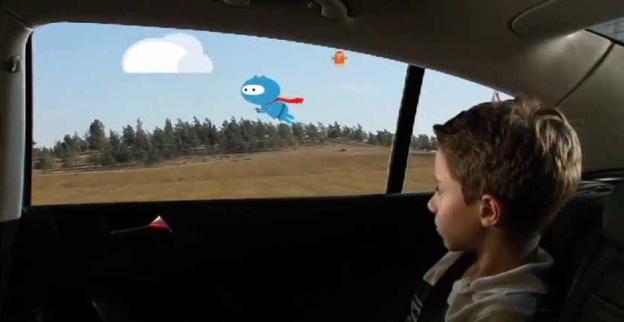 The days of calling “shotgun” for that all-important front passenger seat could be at an end, as General Motors is pushing for development of some new technology that could allow backseat passengers to have all the fun.
The days of calling “shotgun” for that all-important front passenger seat could be at an end, as General Motors is pushing for development of some new technology that could allow backseat passengers to have all the fun.
As part of their “Windows of Opportunity” project, GM challenged researchers and students at Bezalel Academy of Art and Design in Israel to come up with ways to give backseat passengers a more enriching experience on the road. And rise to the challenge they did, creating an entire set of apps that use interactive display windows to make road trips an educational, fun, and yes, social experience.
“Traditionally, the use of interactive displays in cars has been limited to the driver and front passenger, but we see an opportunity to provide a technology interface designed specifically for rear seat passengers,” said Tom Seder, a lab group manager for GM Research & Development. “Advanced windows that are capable of responding to vehicle speed and location could augment real world views with interactive enhancements to provide entertainment and educational value.”
The video below shows some of the fancy apps that the Bezalel Academy team developed:
Some of the apps being developed include:
Otto, an animated character projected over passing scenery that responds to real-time car performance, weather and landscape. With Otto, passengers can learn about their environment in fun, playful ways.
Foofu, an app that allows passengers to create, explore and discover through finger drawing on window steam.
Spindow, an app that provides its users a peek into other users’ windows around the globe in real time.
Pond, an app that allows passengers to stream and share music with other cars on the road, downloads favorite tracks, and share messages with other passengers on the road.
While GM has no plans at this point to put the interactive display windows into production, if they did start doing so, the tech is available. In fact, you might have seen it in use already in a recent film.
If such interactive windows were put into automotive production they likely would use electronically charged “smart glass” technology, which is capable of variable states of translucence and transparency, and can reflect projected images. Smart glass is increasingly used in architectural and display applications, but outside of movies like Mission Impossible: Ghost Protocol is rarely seen in cars.
And with that, suddenly the kids are fighting over who gets to sit in the back seat.



